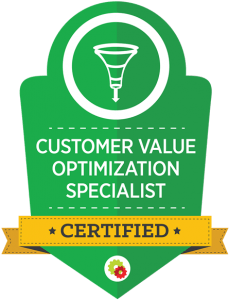How to Leverage Data Analytics for Better Marketing Decisions
In the age of digital transformation, data analytics has emerged as a powerful tool that empowers businesses to make smarter, more informed marketing decisions. By leveraging data analytics, companies can gain a deeper understanding of their customers, optimize their marketing strategies, and ultimately drive better results. But how exactly can you use data analytics to enhance your marketing efforts? This comprehensive guide will explore the best practices, tools, and techniques for leveraging data analytics to make better marketing decisions that fuel business growth.
The modern marketing landscape is driven by data. From tracking customer behavior to measuring the performance of marketing campaigns, data analytics allows marketers to move beyond guesswork and make decisions grounded in evidence. The ability to analyze vast amounts of data and extract actionable insights has become a critical competitive advantage. However, many businesses still struggle to fully harness the potential of data analytics, often due to a lack of knowledge or resources. This article aims to demystify data analytics and show you how to leverage it effectively for better marketing decisions.
What is Data Analytics in Marketing?
Data analytics in marketing involves the collection, processing, and analysis of data to gain insights that inform marketing strategies and decision-making. This process encompasses a variety of techniques, including data mining, statistical analysis, predictive modeling, and machine learning. The goal is to understand customer behavior, measure campaign performance, and identify opportunities to optimize marketing efforts.
Data analytics helps marketers answer crucial questions, such as:
- Who are our most valuable customers?
- What channels drive the most conversions?
- Which marketing campaigns deliver the highest ROI?
- How can we improve the customer journey?
By addressing these questions with data-driven insights, marketers can refine their strategies and make decisions that lead to better outcomes.
The Importance of Data-Driven Marketing
Data-driven marketing is essential in today’s competitive business environment. It allows companies to move away from intuition-based decisions and toward strategies backed by solid evidence. Here’s why leveraging data analytics is crucial for better marketing decisions:
- Personalization: Data analytics enables marketers to tailor their messages to individual customers based on their preferences, behaviors, and demographics.
- Improved ROI: By analyzing data, marketers can identify which campaigns are performing well and allocate resources more efficiently, maximizing return on investment.
- Enhanced Customer Experience: Understanding customer behavior through data allows businesses to improve their offerings, providing a seamless and satisfying customer experience.
- Predictive Insights: Advanced analytics can predict future trends, helping businesses stay ahead of the competition by anticipating customer needs.
Key Types of Data Analytics in Marketing
There are several types of data analytics used in marketing, each serving a unique purpose. Understanding these types can help you choose the right approach for your specific goals.
Descriptive Analytics
Descriptive analytics is the most basic form of data analysis, focusing on summarizing past data to understand what has happened. This includes metrics like website traffic, click-through rates, and sales figures. Descriptive analytics provides a snapshot of performance but does not explain why certain results occurred.
- Use Case: Analyzing monthly website visits to assess overall traffic trends.
Diagnostic Analytics
Diagnostic analytics goes a step further, examining data to determine the cause of past performance. It helps answer the “why” behind the data, identifying patterns and correlations that can provide valuable insights into customer behavior.
- Use Case: Identifying why a particular email campaign had a lower open rate by analyzing subject lines, timing, and audience segments.
Predictive Analytics
Predictive analytics uses historical data and statistical algorithms to forecast future outcomes. By identifying trends and patterns, it helps marketers anticipate customer behavior and make proactive decisions.
- Use Case: Predicting which products a customer is likely to purchase based on their past shopping behavior.
Prescriptive Analytics
Prescriptive analytics is the most advanced form, recommending specific actions based on data analysis. It combines predictive analytics with optimization techniques to suggest the best course of action for achieving desired outcomes.
- Use Case: Recommending the optimal budget allocation across various marketing channels to maximize campaign ROI.
How to Leverage Data Analytics for Better Marketing Decisions
To make the most of data analytics in your marketing strategy, you need to follow a structured approach. Here are the key steps to leveraging data analytics for better marketing decisions:
Define Clear Objectives
Before diving into data analysis, it’s crucial to define your marketing objectives. What are you trying to achieve? Whether it’s increasing brand awareness, boosting conversions, or improving customer retention, having clear goals will guide your data analysis efforts.
- Set Specific, Measurable Goals: Define what success looks like with clear KPIs (Key Performance Indicators) such as click-through rates, conversion rates, or customer lifetime value.
- Align Objectives with Business Strategy: Ensure your marketing goals align with your overall business objectives, creating a cohesive strategy.
Collect and Organize Data
Data collection is the foundation of any analytics effort. Marketers can gather data from various sources, including website analytics, social media, CRM systems, and third-party data providers.
- Use the Right Tools: Tools like Google Analytics, HubSpot, and Salesforce provide valuable data on customer behavior, sales, and campaign performance.
- Ensure Data Quality: Clean and organize your data to remove duplicates, correct errors, and ensure consistency. High-quality data is essential for accurate analysis.
Segment Your Audience
Segmentation is the process of dividing your audience into distinct groups based on shared characteristics such as demographics, behavior, or purchase history. This allows you to tailor your marketing efforts to different segments, making your campaigns more relevant and effective.
- Behavioral Segmentation: Group customers based on their actions, such as website visits, purchase history, or email engagement.
- Demographic Segmentation: Use data on age, gender, location, and income to target specific customer groups.
Analyze Customer Behavior
Understanding customer behavior is key to making better marketing decisions. Analyze how customers interact with your brand across different touchpoints, including your website, social media, and email campaigns.
- Path Analysis: Track the customer journey to see how visitors move through your website and identify drop-off points.
- Engagement Metrics: Monitor metrics like bounce rates, time on page, and session duration to gauge the effectiveness of your content.
Leverage Predictive Analytics for Future Planning
Predictive analytics can help you anticipate future trends and customer behavior. By analyzing historical data, you can forecast outcomes such as sales projections, churn rates, and customer lifetime value.
- Sales Forecasting: Use past sales data to predict future performance and adjust your marketing strategies accordingly.
- Churn Prediction: Identify patterns that indicate a customer is likely to stop using your service, allowing you to take proactive measures to retain them.
Optimize Campaigns with A/B Testing
A/B testing, or split testing, involves comparing two versions of a marketing element to determine which performs better. This method is invaluable for optimizing landing pages, email subject lines, ad copy, and more.
- Test One Variable at a Time: Focus on changing one element at a time, such as the CTA button color or headline copy, to isolate the effect of each change.
- Analyze Results to Drive Changes: Use the data from A/B tests to inform decisions and refine your marketing strategies.
Utilize Data Visualization Tools
Data visualization tools like Tableau, Power BI, and Google Data Studio can help you present complex data in a clear, visual format. These tools make it easier to identify trends, compare performance, and communicate insights to stakeholders.
- Create Dashboards: Develop dashboards that display real-time data on key metrics, allowing you to monitor performance at a glance.
- Use Charts and Graphs: Visual representations of data can highlight correlations and patterns that are not immediately apparent in raw data.
Measure Performance and Iterate
Continuously measuring the performance of your marketing efforts is crucial for ongoing optimization. Use analytics to track KPIs, evaluate the success of campaigns, and identify areas for improvement.
- Regular Reporting: Schedule regular reports to review marketing performance and ensure you’re on track to meet your goals.
- Adjust Strategies Based on Insights: Use the insights gained from data analysis to refine your marketing tactics and drive better results.
Tools and Technologies for Data-Driven Marketing
Leveraging data analytics effectively requires the right tools and technologies. Here are some of the most popular analytics tools used by marketers:
Google Analytics
Google Analytics is a powerful, free tool that provides detailed insights into website traffic, user behavior, and campaign performance. It’s essential for tracking metrics such as page views, session duration, and conversion rates.
HubSpot
HubSpot is an all-in-one marketing, sales, and service platform that offers robust analytics features. It provides data on lead generation, email marketing performance, and customer journey tracking, making it ideal for inbound marketing strategies.
Tableau
Tableau is a leading data visualization tool that allows marketers to create interactive dashboards and reports. It helps turn raw data into actionable insights, making it easier to identify trends and patterns.
Google Data Studio
Google Data Studio integrates with other Google tools to create customizable, shareable dashboards. It’s particularly useful for reporting and visualizing data from various sources, including Google Analytics and Google Ads.
Salesforce
Salesforce is a comprehensive CRM platform that provides advanced analytics for tracking sales performance, customer interactions, and marketing campaigns. Its AI-driven insights help businesses make data-informed decisions.
Challenges of Leveraging Data Analytics in Marketing
While data analytics offers immense benefits, it also comes with challenges. Understanding these obstacles can help you develop strategies to overcome them.
Data Privacy and Compliance
With growing concerns about data privacy, businesses must ensure compliance with regulations like GDPR and CCPA. Marketers need to collect, store, and use customer data responsibly, obtaining consent and safeguarding sensitive information.
Data Overload
The sheer volume of data available can be overwhelming, making it difficult to focus on what’s truly important. Prioritize data that aligns with your marketing objectives and use filters to narrow down the most relevant information.
Skill Gaps
Leveraging data analytics requires specific skills, including data interpretation, statistical analysis, and familiarity with analytics tools. Investing in training or hiring skilled analysts can help bridge these gaps.
Data Quality Issues
Incomplete, outdated, or incorrect data can lead to misguided decisions. Implement data quality checks and validation processes to ensure you’re working with accurate and reliable data.
FAQs
What is data analytics in marketing?
Data analytics in marketing involves collecting, processing, and analyzing data to gain insights that inform marketing strategies, helping businesses make better decisions.
How can data analytics improve marketing decisions?
Data analytics improves marketing decisions by providing evidence-based insights, identifying trends, and predicting future outcomes, allowing marketers to optimize strategies and achieve better results.
What are the key types of data analytics used in marketing?
The key types include descriptive analytics (summarizing past data), diagnostic analytics (identifying causes), predictive analytics (forecasting future outcomes), and prescriptive analytics (recommending actions).
Which tools are best for data-driven marketing?
Popular tools include Google Analytics, HubSpot, Tableau, Google Data Studio, and Salesforce, each offering unique features for data collection, analysis, and visualization.
What are the challenges of using data analytics in marketing?
Challenges include data privacy compliance, data overload, skill gaps, and data quality issues. Addressing these challenges is essential for effective data-driven marketing.
How do I start leveraging data analytics for my marketing strategy?
Start by defining clear objectives, collecting and organizing your data, segmenting your audience, analyzing customer behavior, and using predictive analytics to guide your marketing decisions.
Conclusion
Leveraging data analytics for better marketing decisions is no longer a luxury—it’s a necessity. By embracing data-driven strategies, marketers can optimize their efforts, create personalized experiences, and make informed decisions that drive business growth. Whether you’re just starting out or looking to refine your approach, the key is to use data as a guide, continually measuring performance and iterating on your strategies. With the right tools, techniques, and mindset, data analytics can transform your marketing decisions and set your business on the path to success.











